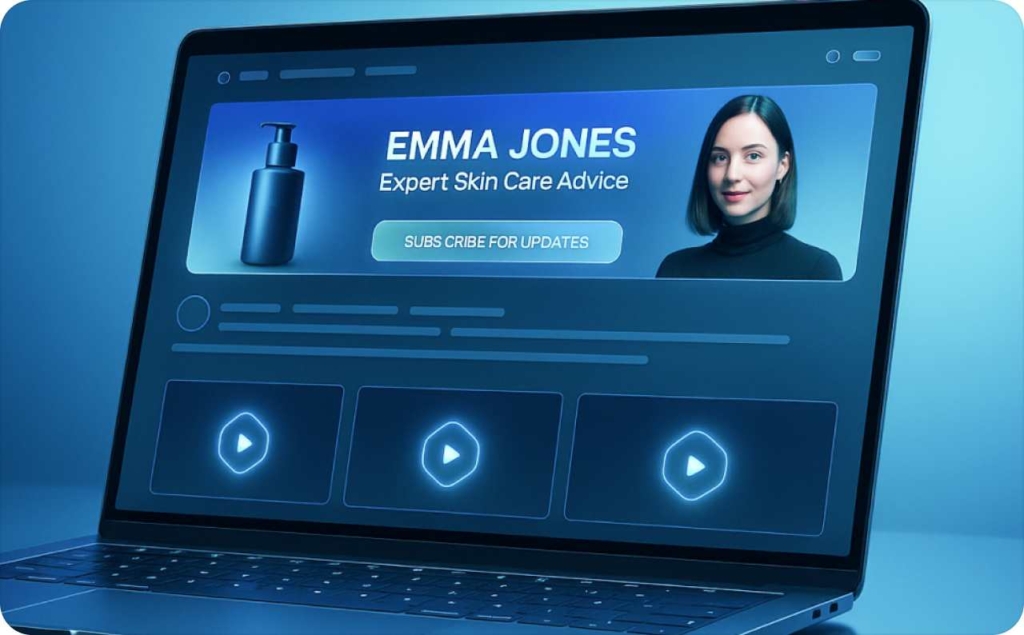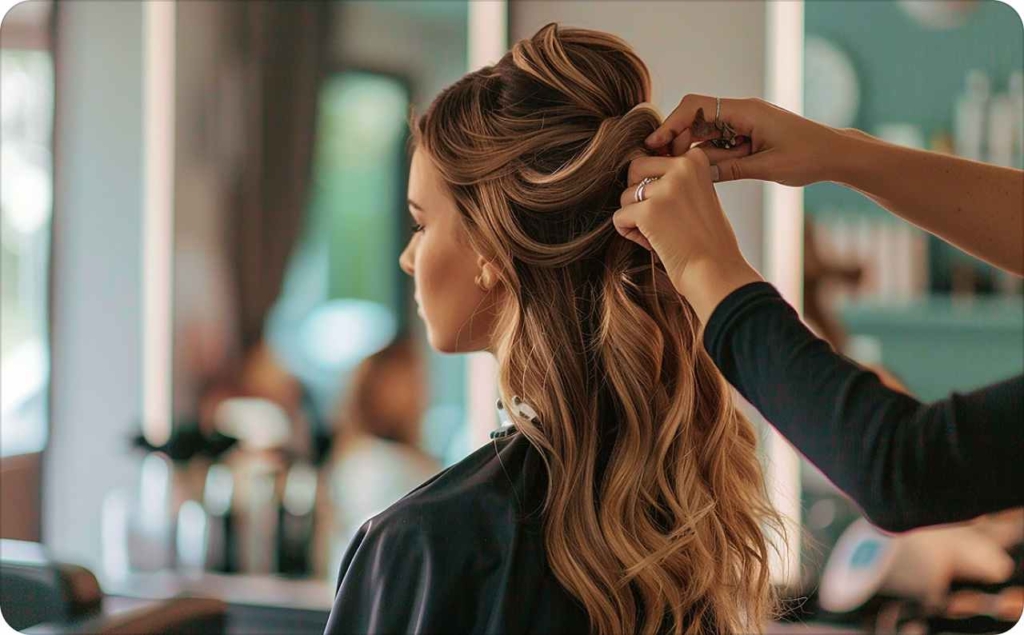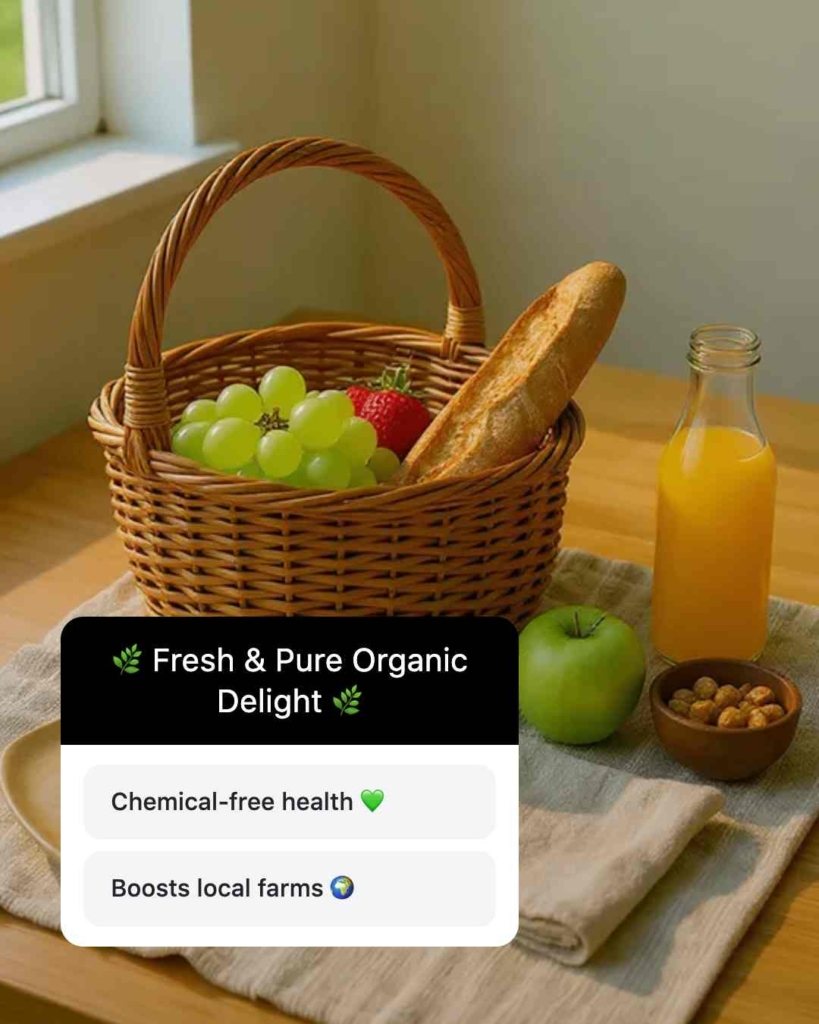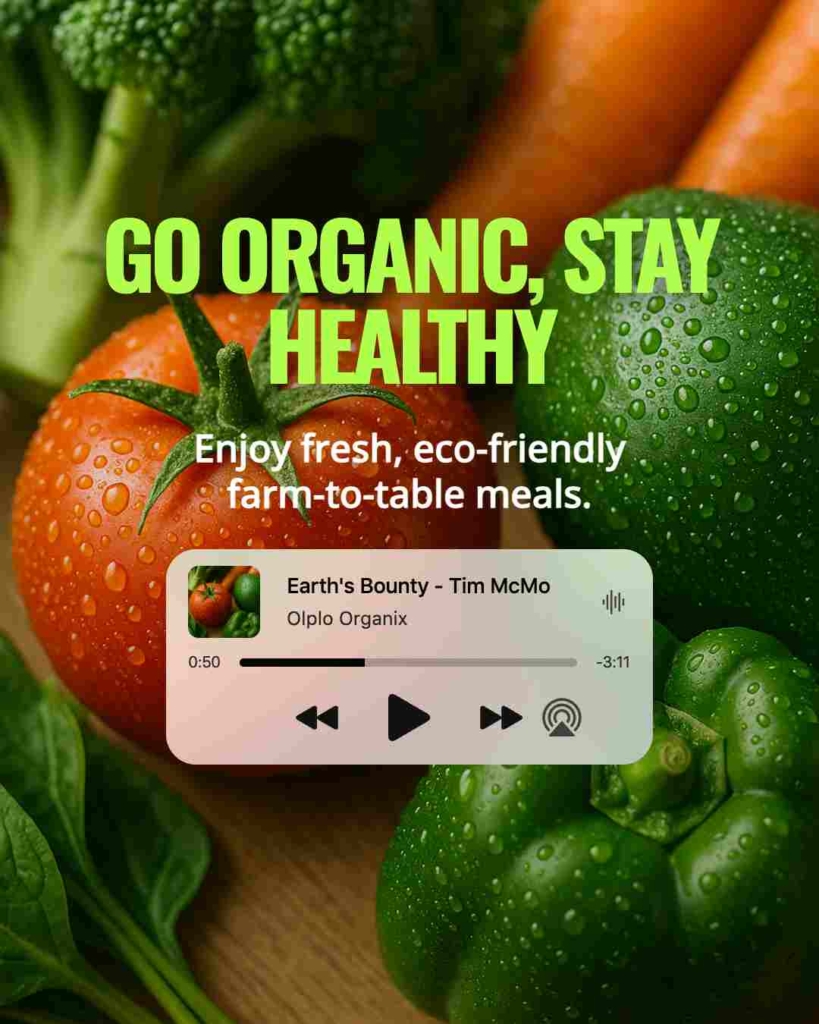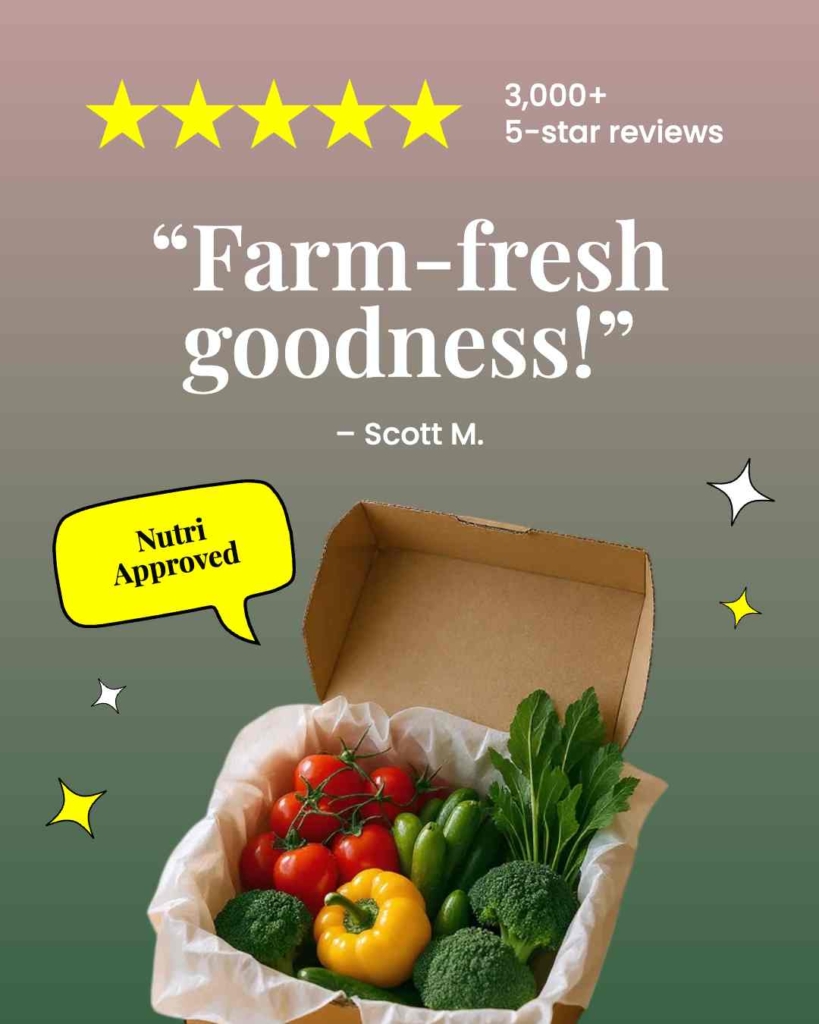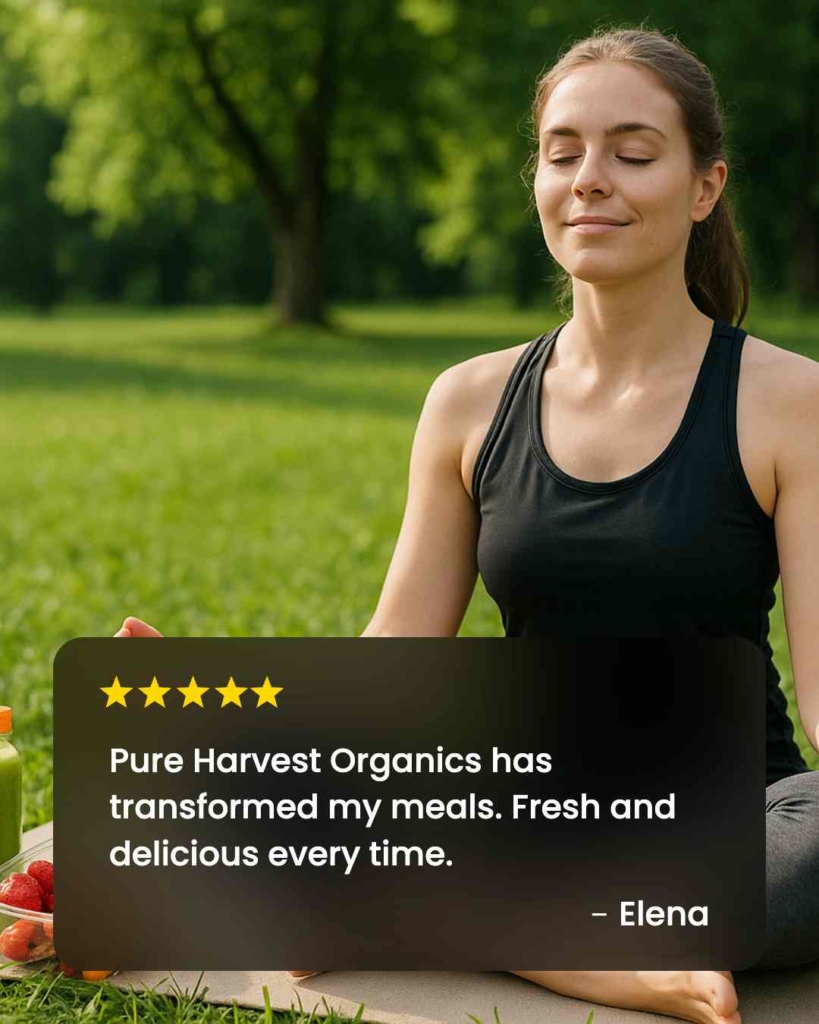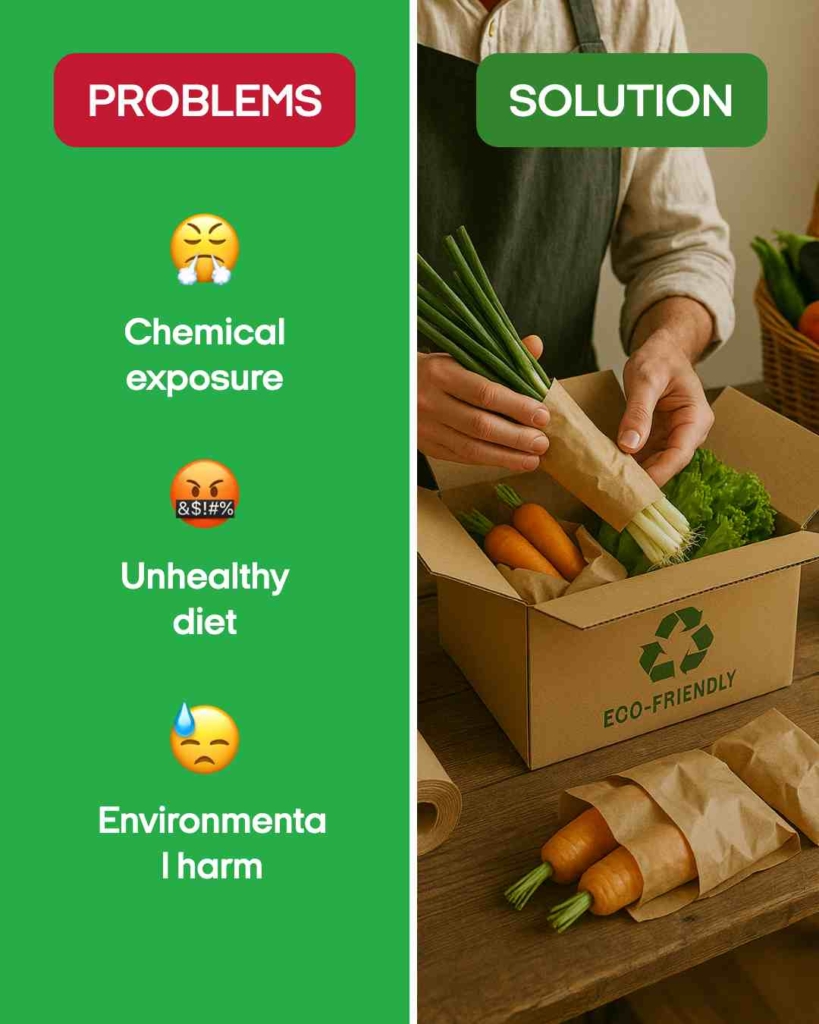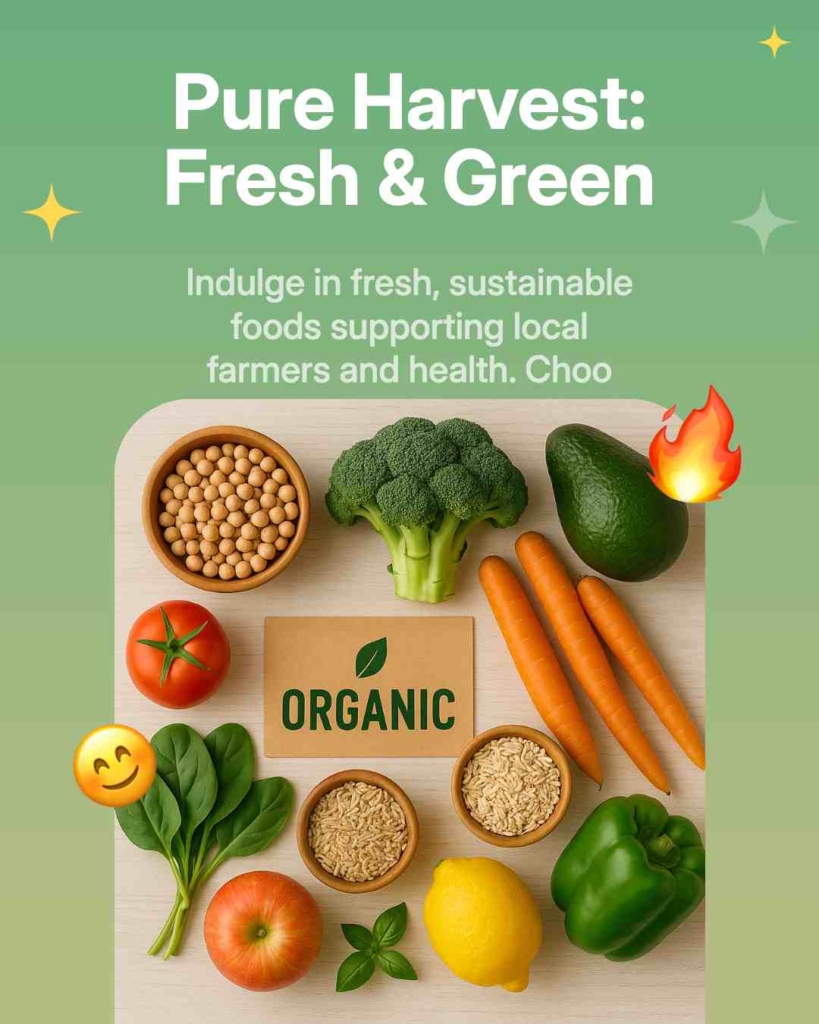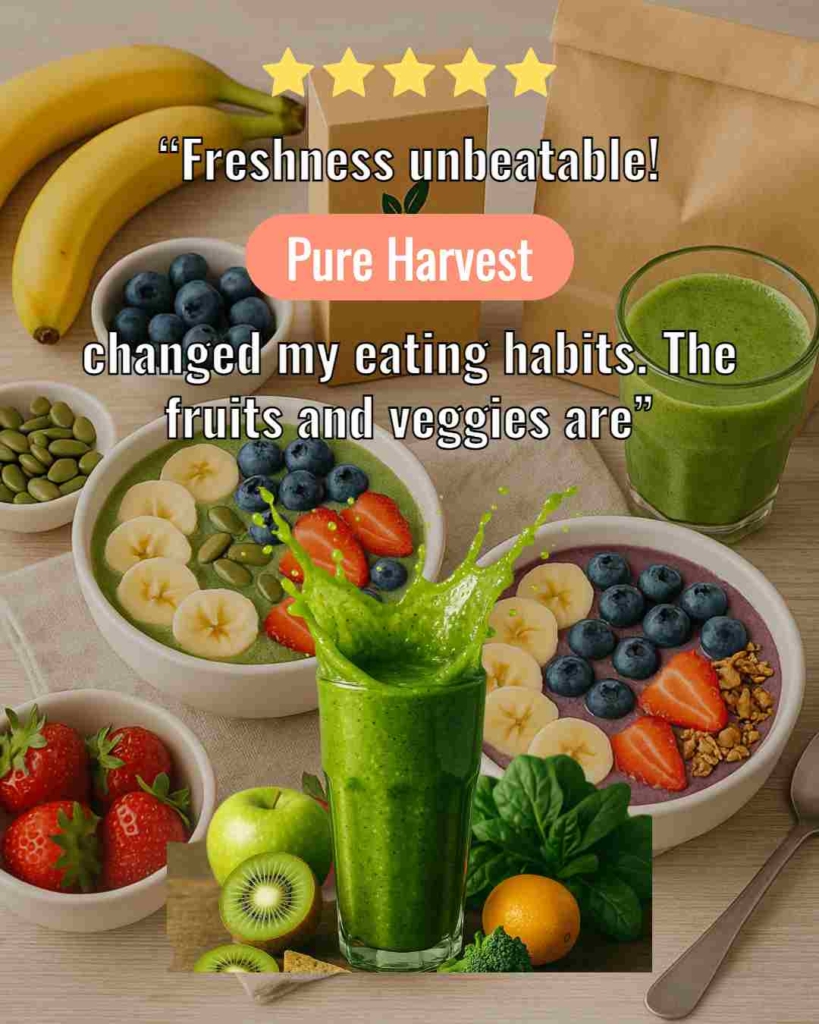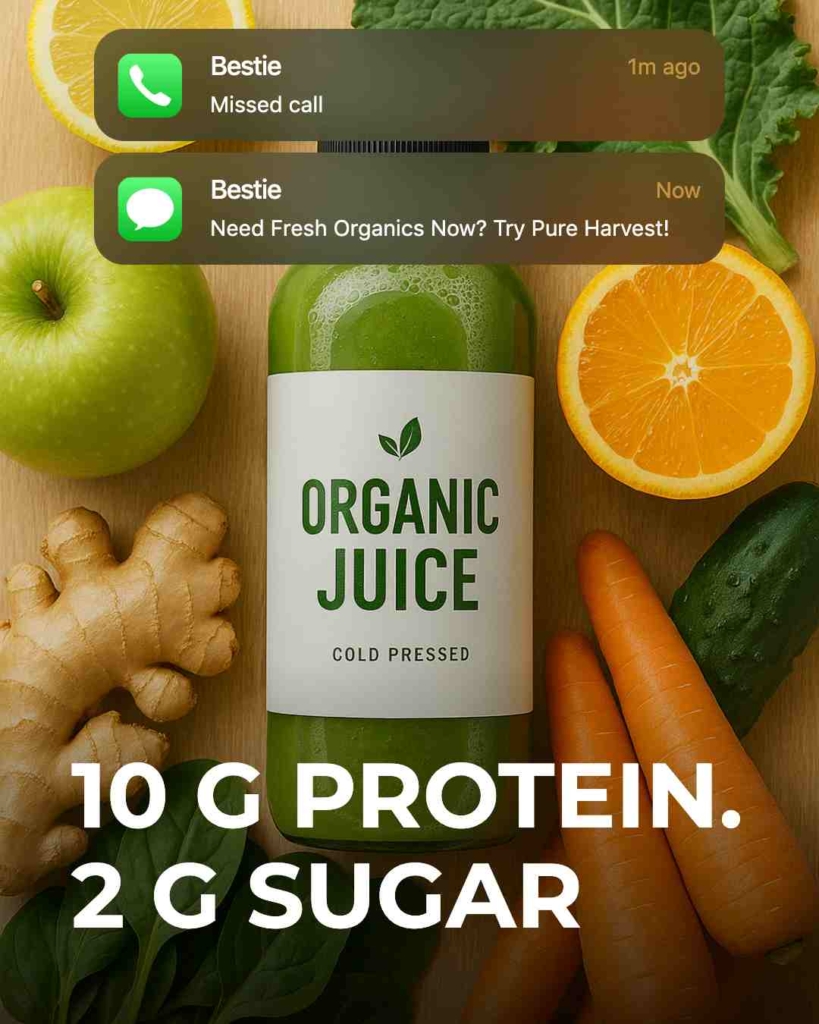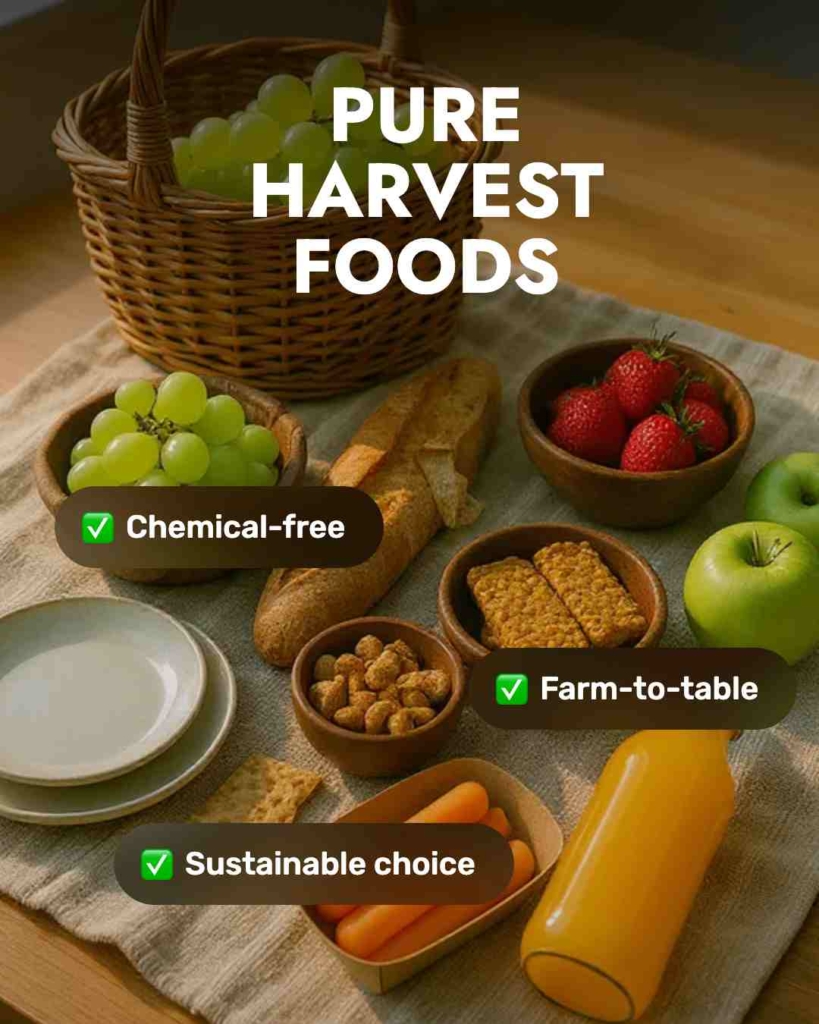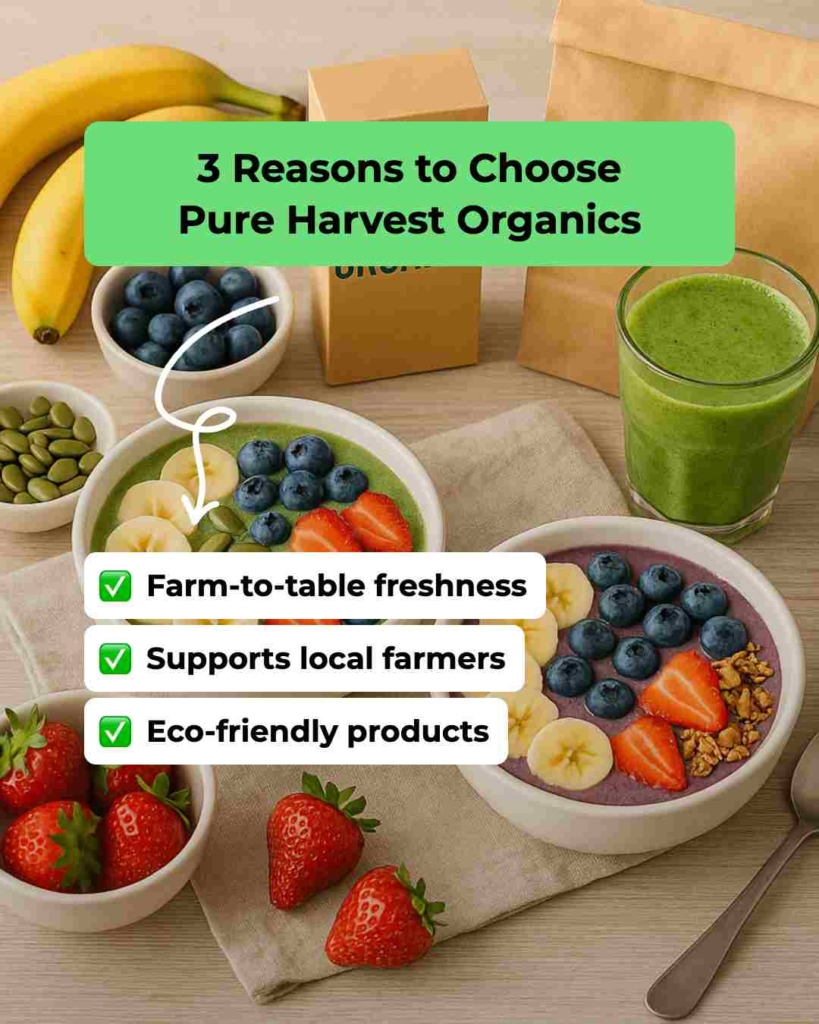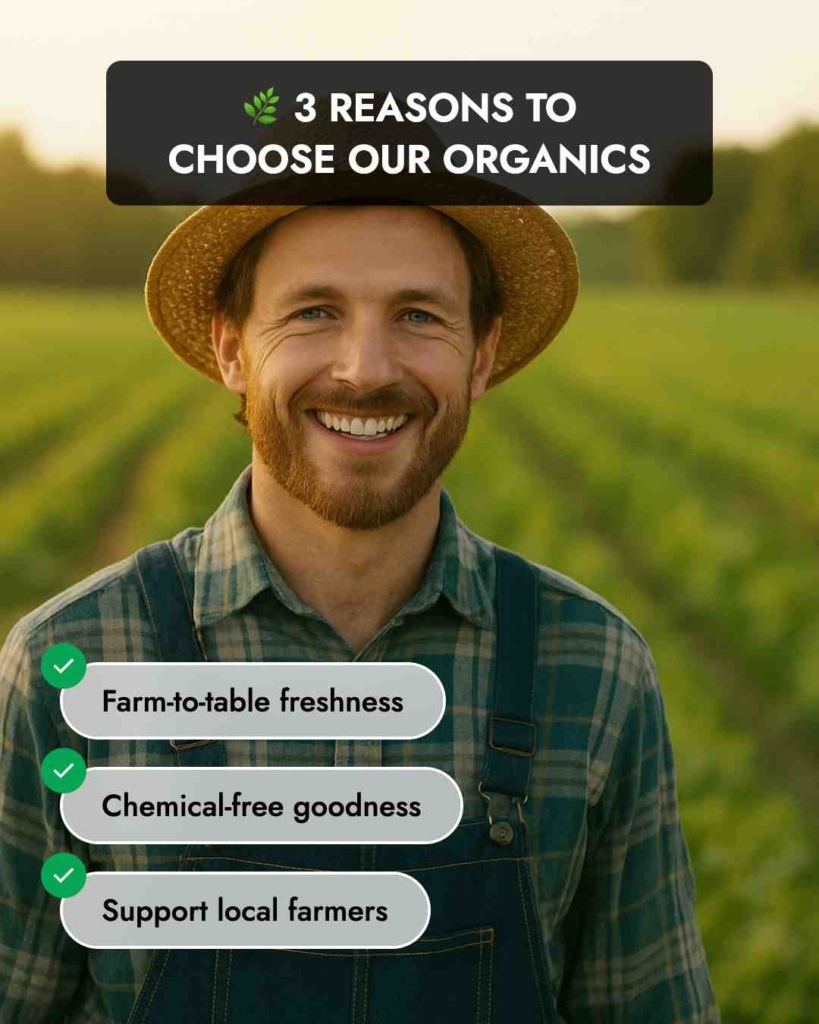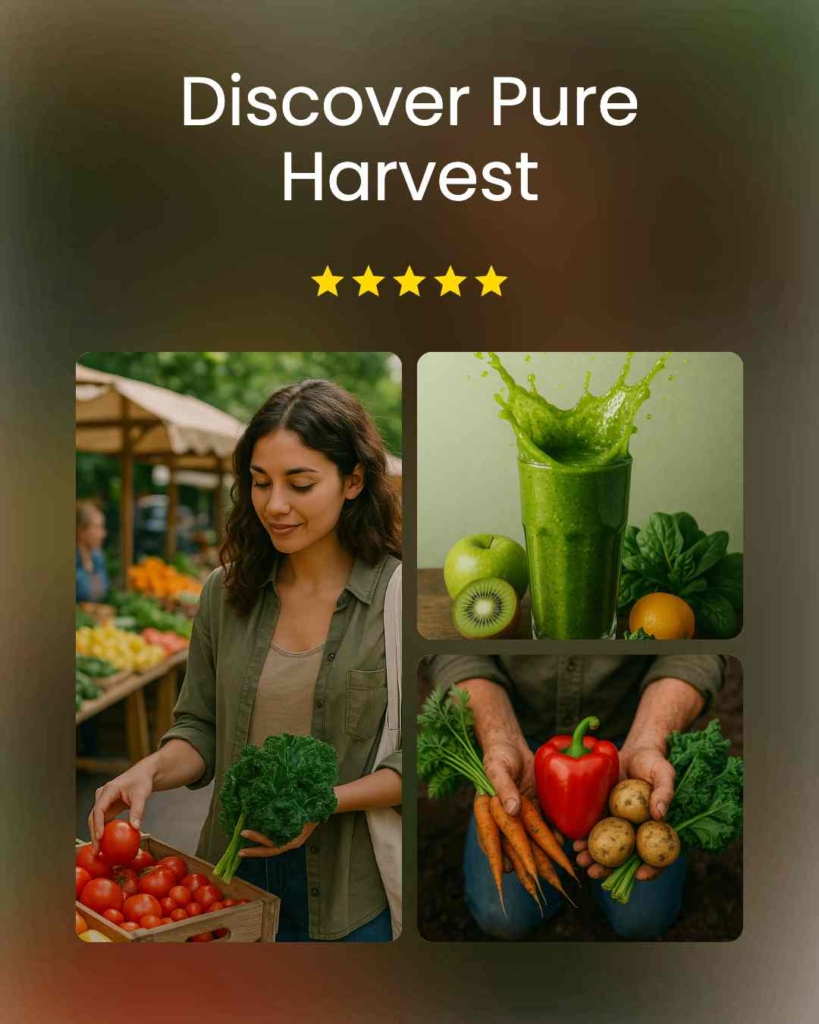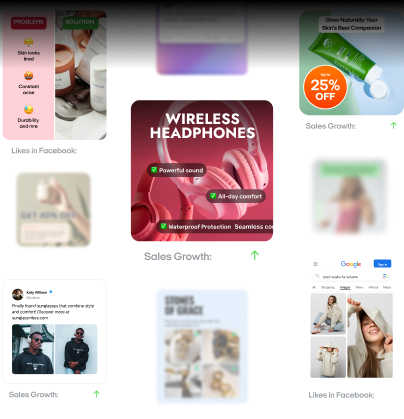Organic food ads: The best 7 patterns and 5 formats
Discover 7 proven patterns and 5 winning formats for organic food ads that boost engagement, trust, and conversions.
Organic food advertising has shifted. People don’t want vague natural food commercials or hollow “all natural” promises — they want proof on the label, trust in the story, and ads that feel believable. The best healthy food ads today don’t guilt people or oversell; they quietly show what makes the product worth putting in the cart.
This guide breaks down how brands are doing it in 2025. You’ll see real healthy food ads examples, safe claims that regulators actually allow, playbooks you can borrow, and the KPIs that tell you whether your campaign is working. Whether you’re running healthy food commercials on TV, testing healthy food advertising on TikTok, or launching shoppable natural food commercials, the principles are the same: clarity, support, and results you can measure. If you want a quick refresher on formats and terms, this explainer on Display ads vs banner ads is a handy primer.
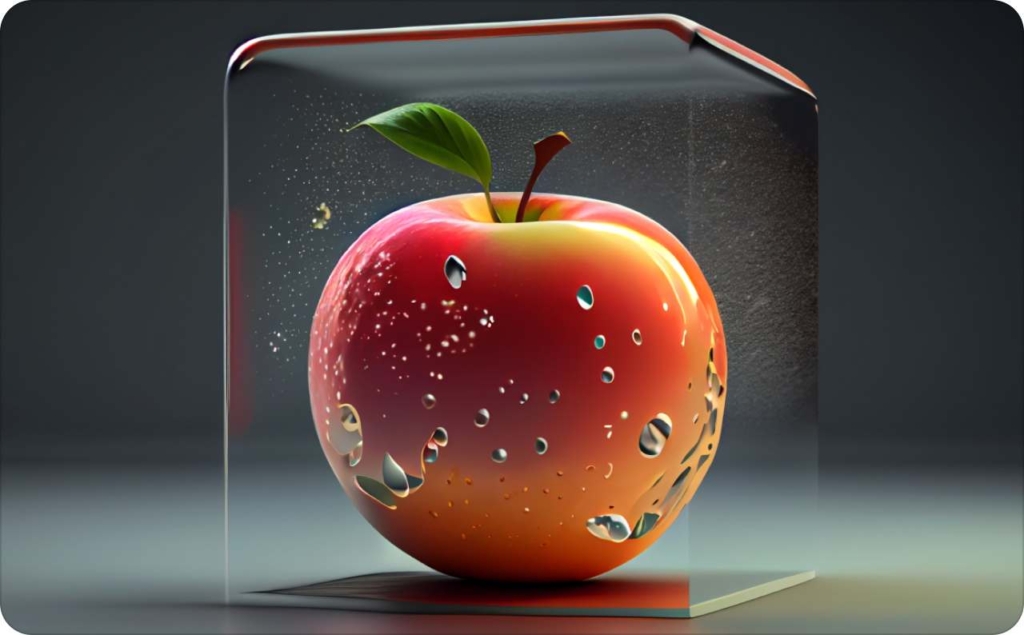
Why “healthy” ads win
You might assume “healthy” is a niche sell. But in today’s market, health claims are part of what can make an ad click. The catch is: they must line up with taste, price, and effort, no missing legs or the ad falls flat.
Here’s a stat to anchor that idea: McKinsey reports that over 90 % of U.S. consumers said they shopped with an online-only retailer in the past month. That shows people are opting for frictionless options — they expect convenience. Your healthy food ad can’t feel like work.
So imagine this scene: a 10-second video starts with someone tearing open a crisp, nutty snack. You feel the crunch. Next frame shows “2 g sugar + 10 g protein” overlay. Then, no voiceover, no me-too pledges, you see the person walking out the door, snack in hand, ready for their day. That’s how you show taste + health with zero friction.
Now layer in price. In stretched budgets, people scan claims fast. Ads that promise “same taste, lower cost per serving” land harder than “premium ingredients.”
When you ask why healthy food ads work, the answer lives in that sweet spot: they don’t force you to choose. They show you don’t have to.
The 7 repeatable patterns from top performers
Look across the best healthy food ads lately, and you’ll find a hidden rhythm. They don’t all look the same, but they use similar moves to land trust, crave, and buy. Below are seven patterns that keep resurfacing, each with lessons you can test directly.
Before we jump in: Cannes 2025 showed something critical. R/GA ran an AI-powered campaign that drove a 72 % increase in conversion rate. That stat is about creative + tech working together. You can borrow the spirit of that boost, even in healthy food ads.
1. Parody with a purpose: Funny healthy food ad examples, creative healthy food ads
A snack brand mocks the sugar-rush clichés of soda ads. Or a juice spot exaggerates “fake natural” labels before offering its honest alternative. The funny twist lowers defenses. The health message slips in more smoothly.
Why it works: When people laugh, resistance drops. If the product still looks good, they’ll give the claim a chance.
2. Show, don’t preach: Organic food advertising, farm-to-fork ads
Don’t tell people you use local farms. Show dew on the leaves, hands picking berries, trucks rolling onto the loading dock. Visual proof beats any “fresh from farm” tagline.
Why it works: You build trust by showing where things come from, especially in farm-to-fork ads and organic food advertising.
3. Borrowed trust: Healthy food commercials with celebrities, creator ads for healthy brands
A well-known chef or wellness creator uses your granola bar in their morning routine. That endorsement carries weight, especially if the creator’s voice feels real, not scripted.
Why it works: People trust people they already follow. Celebrity or creator synergy shortens the gap from “who?” to “maybe I’ll try.”
4. Platform-native hooks: TikTok healthy food ads, natural food commercials in short video
A 5-second clip that opens with a splash, pour, or crunch — set to trending sound. The hook feels like content, not an interruption. That’s what TikTok healthy food ads do when they hit.
Why it works: The ad doesn’t fight the feed. It blends in, and then demands your attention.
5. Solve a pain instantly: Convenience-focused healthy ads, snack and meal prep angles
Show someone opening a fridge and grabbing a fully balanced meal. Or heating it in seconds. The ad is selling time saved + decision avoided.
Why it works: Effort is a barrier. The fastest shortcut wins the cart.
6. Animate the invisible: Ingredient transparency ads, sustainable sourcing ads
Things like fiber, enzyme benefits, or carbon footprint are invisible. But with overlays, motion graphics, or “under the hood” animation, you can make them feel real.
Why it works: If your benefit can’t be seen, you need to show it in a way people understand. Transparency becomes a story.
7. Make it share-worthy: UGC healthy food ads, contest campaigns
Invite users to show their weird snack combos, morning routines, or creative ways they use your product. Then repost, highlight, prize winners. That’s how UGC healthy food ads spread naturally.
Why it works: When peers do the recommending, not brands, it hits differently.
What typical roundups miss and how to do it right
Often, “top ads of the year” lists stop at the pretty visuals or catchy slogan. But for a healthy food advertising strategy to actually work, you have to go deeper. You need to ask: are the claims safe? Does the format hold up where people shop? Are you measuring truth, not vanity?
Here’s a stat to ground that thinking: according to Nielsen, 54 % of global marketers plan to reduce ad spend in 2025. That kind of belt-tightening means you can’t waste budget on ads that don’t hold up under scrutiny.
Most roundups miss three essentials:
- Claim safety over cleverness. The flashiest slogan won’t matter if regulators flag it. Instead of “immune-boosting” or “miracle cure,” smart ads use language like “low in sugar,” “good source of fiber,” or “supports normal digestion.” That’s claim-safe healthy advertising — credible, defensible, and believable
- The shelf moment, not just the scroll moment. Many brands nail their natural/organic ad claims in social reels, then forget those creatives have to work when someone’s standing in aisle 5. In retail media for CPG, the creative must convert fast at the point of decision. Think badges, overlays, buy buttons, one-swipe units. If retail is your channel, skim Retail advertising for in-aisle tactics that translate
- Channel-aware measurement. A 6-second TikTok needs a different metric than a 30-second TV ad. If you measure every ad the same way, you’re lying to yourself. A real strategy maps creative → placement → KPI
How to do this right:
- Always test your claims for safety before you build the creative
- Design your ad knowing the “last mile” — the shelf, the cart, the click
- Pick the right metric for that creative and channel, not your favorite vanity metric
Creative blueprints you can copy and paste
You want scripts you can drop into production this week. Below are healthy food ad templates and healthy food commercial scripts that map exactly how top ads are built today. Each blueprint gives you scenes, lines, claims, and a closing call to action. Use them as starting points — tweak to your product’s story.
HubSpot reports that 30% of marketers already use short-form video in their strategies, and many say it delivers the highest ROI among content types. That means these blueprints are where attention lives.
Blueprint 1: The crunch first
Open with a bite — sharp, textured, immediate. Capture the crunch in close-up. Layer on-screen text: “10 g protein. 2 g sugar.” Shift to someone grabbing it on the go — in a gym bag or car. End with a clean product shot and CTA: “Add to cart.”
Why it works: It hooks appetite first, then shows proof.
Blueprint 2: The 15-second swap
Start with someone packing a lunch. Show them hovering between candy and your product, then choosing yours. Overlay safe claims like “low sugar, high fiber.” Cut to the kid enjoying it. Wrap with your brand + “Healthier swap made easy.”
Why it works: It dramatizes the everyday choice your customer faces.
Blueprint 3: The transparency overlay
Start with a static product shot. As it holds, animated labels float in: “Oats,” “Almonds,” “Honey.” Cut to raw ingredients being poured or chopped. Return to package with overlay: “What’s inside? Exactly what you see.” CTA: “Shop now.”
Why it works: It visualizes what people can’t see — ingredient quality, no hidden stuff.
Blueprint 4: The quick solve
Text overlay opens: “Dinner in 90 seconds.” Show microwave countdown, then reveal a plated, balanced meal. Add nutrition tags: “High protein. Low sodium.” End with someone taking that first bite, looking satisfied. CTA: “Healthy doesn’t have to wait.”
Why it works: It confronts the hardest barrier and solves it immediately.
Blueprint 5: The social challenge
Open with overlay: “Show your 3-ingredient snack hack.” Flash quick, user-style examples. Cut to real people using your product in fast, creative ways. End with: “Tag us to win.” Logo + call to action.
Why it works: It hands you content you don’t have to produce, fans make it for you.
These five healthy food ad templates are detailed enough to run with right away, but light enough to let your brand voice and visuals shine. Use them to speed up ideation without losing claim safety or strategic thinking.
How to create organic food ads with an AI ad generator
Running great healthy food or organic food ads doesn’t have to mean weeks of creative work. With Zeely’s AI ad generator, you can build campaigns that are faster to make, easier to launch, and sharper on conversion. It’s a fast ad generator designed to pull your product story straight into formats that sell.
See creative solutions for other industries
Step-by-step process
- Add your product URL or Shopify store. Zeely pulls product details automatically, saving hours of manual input and making sure every ad starts with accurate data
- Choose your format. Pick between static image ads, motion-based video ads, or even avatar-led spots. Each format is built for performance across social platforms
- Let AI generate your copy and visuals. In seconds, the system produces both ad text and creative layouts, giving you tested hooks and eye-catching imagery that match your product benefits
- Make quick edits. Adjust colors, tweak text, or swap music. The editing tools are lightweight but powerful, so you can polish without needing a design team
- Launch with one click via Meta integration. Push ads live directly to Facebook and Instagram, skipping the back-and-forth between tools. Faster launch means faster learning
- Generate ads in bulk for A/B testing. Create multiple variations at once to compare headlines, visuals, and CTAs. The benefit: higher CTRs and faster insights into what really works
Why it matters
AI automation trims production time from weeks to minutes, so you can focus on testing and scaling. The result: higher click-through rates, stronger ROI, and less creative bottleneck. With Zeely, your ads don’t just get made, they get smarter, faster. It’s a universal growth tool for any business ready to turn AI ad creation into real revenue.
Conclusion
The strongest healthy food ads in 2025 don’t shout or oversell. They prove taste, price, and ease in formats people already use — from shoppable clips to interactive overlays. With Zeely’s AI ad generator, you can build them in minutes, test more ideas, and scale what works.
Keep claims safe, show proof, and make action effortless. That’s how healthy food advertising stops being noise and starts moving carts.
You may also like
Also recommended

